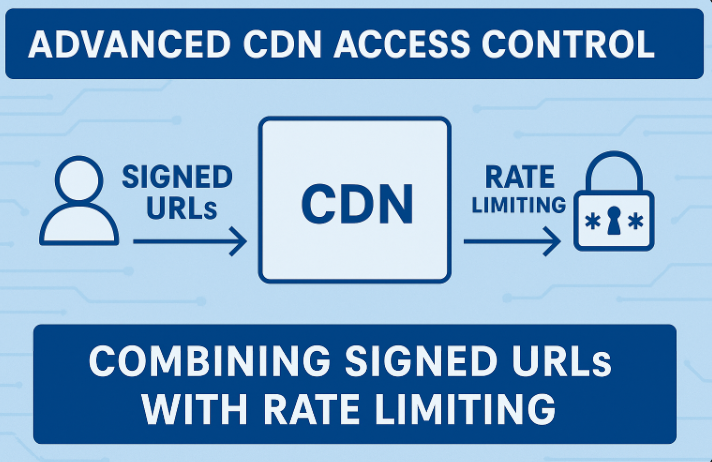
In a world where websites are hit with millions of requests every second, simply caching content at the edge isn’t enough. Ever wondered how to prevent users from sharing private CDN links all over the internet or how to stop bot armies from eating up your bandwidth? The answer lies in two powerful techniques: signed URLs and rate limiting. Used together, they create a dynamic duo of access control that’s smarter, sharper, and more secure.
Why Access Control Matters in CDN Networks
A CDN’s job isn’t just to speed up delivery—it’s also about protecting resources. When anyone can access your CDN endpoints without restriction, you're exposed to:
Bandwidth theft: Unauthorized downloads or hotlinking.
DDoS attacks: Overwhelming traffic floods from bots or malicious actors.
Content abuse: Distribution of private or sensitive data to unintended audiences.
That’s where signed URLs and rate limiting come in. Let’s dig deeper into each and then see what happens when they work hand-in-hand.
Part 1: What Are Signed URLs?
Signed URLs are time-sensitive, access-controlled links generated for users with specific parameters—often including an expiration time, IP lock, and unique tokens.
Example use case:
You’re running a paid video platform. Every user should have 24-hour access to a video they purchased. If you provide a plain link, users can share it publicly. But with a signed URL, that link will expire—or only work for the user’s IP.
How it works:
Server generates a token using a secret key.
Token includes metadata like expiry timestamp or IP hash.
URL is served with that token as a query parameter.
CDN validates token before serving content.
Benefits:
Fine-grained access control.
Time-limited access = reduced abuse.
Works seamlessly across CDN edge locations.
Part 2: Understanding Rate Limiting
Now imagine someone legitimately gets access to your CDN content—but then fires off 1000 requests per second. That’s when rate limiting becomes your shield.
Rate limiting controls how frequently users can make requests within a time window.
Common strategies:
Token bucket: Users accumulate tokens over time. Once they run out, they must wait.
Leaky bucket: Similar to above, but with steady output.
Sliding window: Tracks requests over a rolling time window, allowing burst traffic handling.
Benefits:
Protects origin and edge servers from overload.
Defends against brute force attacks and scraping bots.
Ensures fair resource distribution.
Part 3: The Real Power — Combining Both
Think of signed URLs as the "who" and "when", and rate limiting as the "how often".
By integrating both strategies, you can:
Feature:Signed URLs、Rate Limiting、Combined
Access Control:Per-user/Time-based、Request Frequency、Fine-grained + Abuse Prevention
Security Level:High、Moderate、Very High
Implementation:Token + Expiry、Thresholds/IP、Token + Thresholds
Use Case:Premium Content、API Protection、Enterprise CDN Access
Practical scenario:
A premium user receives a signed URL to download a 1GB file.
The CDN also limits this user to 10 requests per minute to prevent download abuse or repeated token guesses.
Even if the URL leaks, its token will expire, and excessive requests will be throttled.
Implementation Tips
Use HMAC-SHA256 for URL tokens: It’s secure and widely supported.
Leverage CDN native rules: Providers like Cloudflare, Akamai, and AWS CloudFront all support both signed URLs and rate limiting.
Log everything: Monitor for token replay attacks, excessive 403 errors, and suspicious access patterns.
Test in stages: Start by enabling signed URLs alone, then layer rate limiting gradually.
Final Thoughts
Can signed URLs and rate limiting make your CDN bulletproof? Not entirely—but they’re damn close.
While many sites rely solely on one of these techniques, combining both is what separates a protected platform from a vulnerable one. It’s like installing a lock and an alarm system on your front door. If you’re serious about performance and security, this combo isn’t optional—it’s essential.

